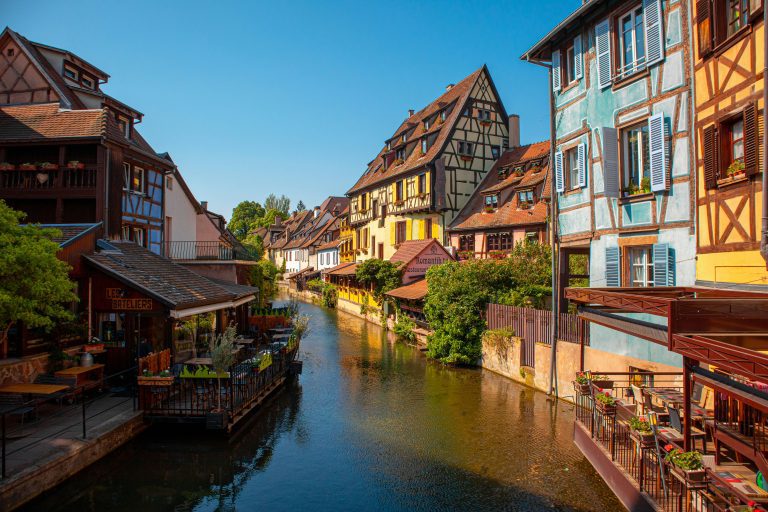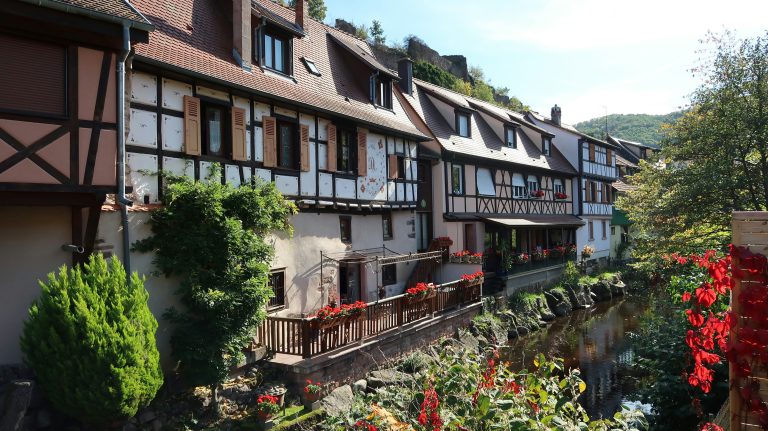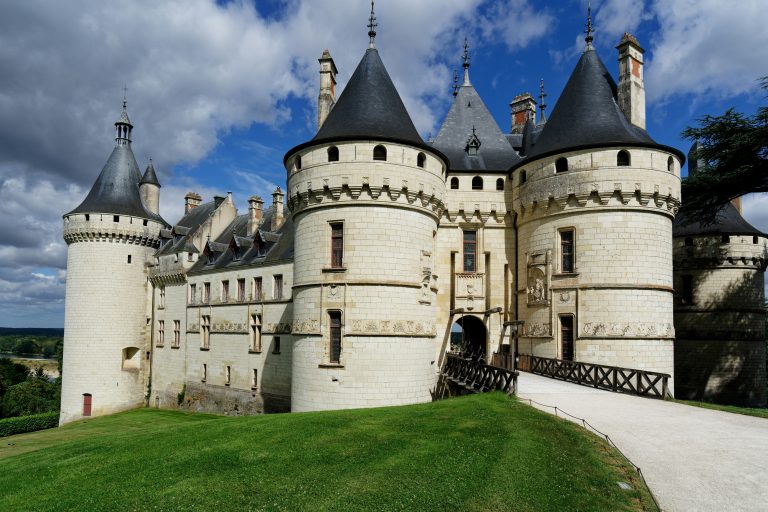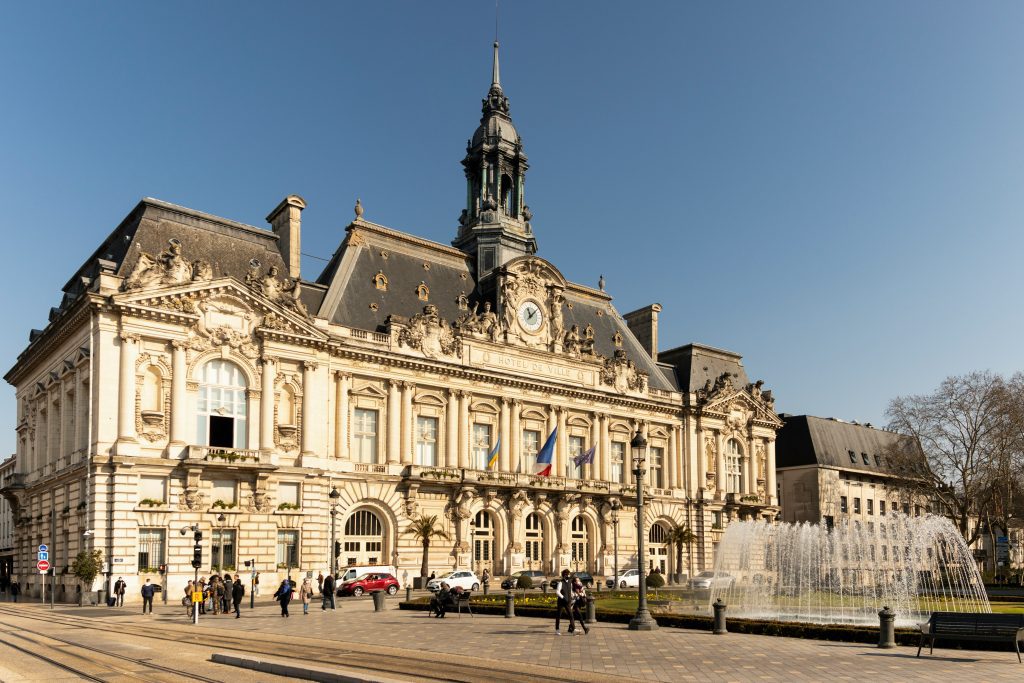
Imagine stepping out of your hotel in Tours and, within an hour, you’re walking through a fairy-tale castle where French kings once lived.
Picture yourself wandering through gardens so beautiful they look like paintings, or exploring medieval streets where Joan of Arc once walked. This isn’t just a dream—it’s what happens when you plan day trips from Tours to explore the amazing Loire Valley.
Tours sits right in the heart of France’s Loire Valley, often called the “Garden of France.” This charming city gives you easy access to more than 300 stunning castles, historic cities, and beautiful countryside.
Whether you want to see the famous Château de Chambord, walk through the romantic gardens of Villandry, or learn about Joan of Arc in Orléans, Tours puts it all within reach.
The best part? You don’t need weeks to see the highlights. With smart planning, you can visit several amazing places in just one day. From grand castles that inspired Disney movies to medieval cities with cobblestone streets, each day trip from Tours offers something special.
This guide shows you exactly how to make the most of your time in the Loire Valley. We’ll cover the easiest ways to get around, the must-see castles and cities, when to visit for the best experience, and insider tips that most tourists never learn.
By the end, you’ll know how to plan perfect day trips that create memories to last a lifetime.
Some of the links on this site are affiliate links and I may earn a little something if you decide to click on them at no additional cost to you. Thanks!
Why Tours Makes the Perfect Home Base
Location That Can’t Be Beat
Tours sits in exactly the right spot for exploring the Loire Valley. The city is just one hour from Paris by high-speed train, making it easy to reach from anywhere in France or Europe. But what makes Tours really special is how it connects you to everything else.
From Tours, you can reach the most famous Loire Valley castles in under an hour. Château de Chenonceau is just 45 minutes away.
The massive Château de Chambord takes less than an hour to reach. Historic cities like Blois and Angers are easy train rides away. This central location means you spend more time exploring and less time traveling.
The Loire River runs right through Tours, and the city has grown up along its banks for over 1,500 years. This long history means Tours itself has plenty to see, from its beautiful Gothic cathedral to its lively old town filled with restaurants and shops.
Getting Around Made Simple
One of the biggest worries travelers have about visiting the Loire Valley is transportation. The good news is that Tours makes getting around much easier than you might think.
Train Connections:
- Paris: 1 hour by TGV high-speed train
- Blois: 40 minutes by regional train
- Angers: 50 minutes by direct train
- Orléans: 1 hour by regional train
- Le Mans: 1 hour by direct train
Bus Services to Castles: The local bus company, Rémi Centre-Val de Loire, runs special routes to major castles. These buses are designed for tourists, so they stop right at castle entrances and run on schedules that give you enough time to visit.
Tour Options: If you prefer to let someone else handle the driving, Tours has many tour companies offering day trips. These range from small groups of 8 people to larger bus tours, with prices starting around €80 for a full day.
A City Worth Exploring Too

While you’re in Tours, don’t miss the city itself. The old town (Vieux Tours) has narrow medieval streets perfect for evening strolls.
The Place Plumereau square comes alive at night with outdoor cafes and wine bars. The Saint-Gatien Cathedral showcases amazing Gothic architecture and beautiful stained glass windows.
Tours also has a young, lively feel thanks to its 40,000 university students. This means great restaurants at every price level, from budget-friendly bistros to fancy establishments. The city’s weekly markets are perfect for picking up picnic supplies for your castle visits.
Pro tip: While Tours makes an excellent base, some travelers prefer the ultimate luxury of staying directly in a Loire Valley château.
If you’re considering this once-in-a-lifetime experience, you might want to explore the best château hotels in Loire Valley for an truly immersive royal experience.
Must-Visit Loire Valley Castles
The Big Three: Chambord, Chenonceau, and Amboise
Château de Chambord: The Giant of the Loire
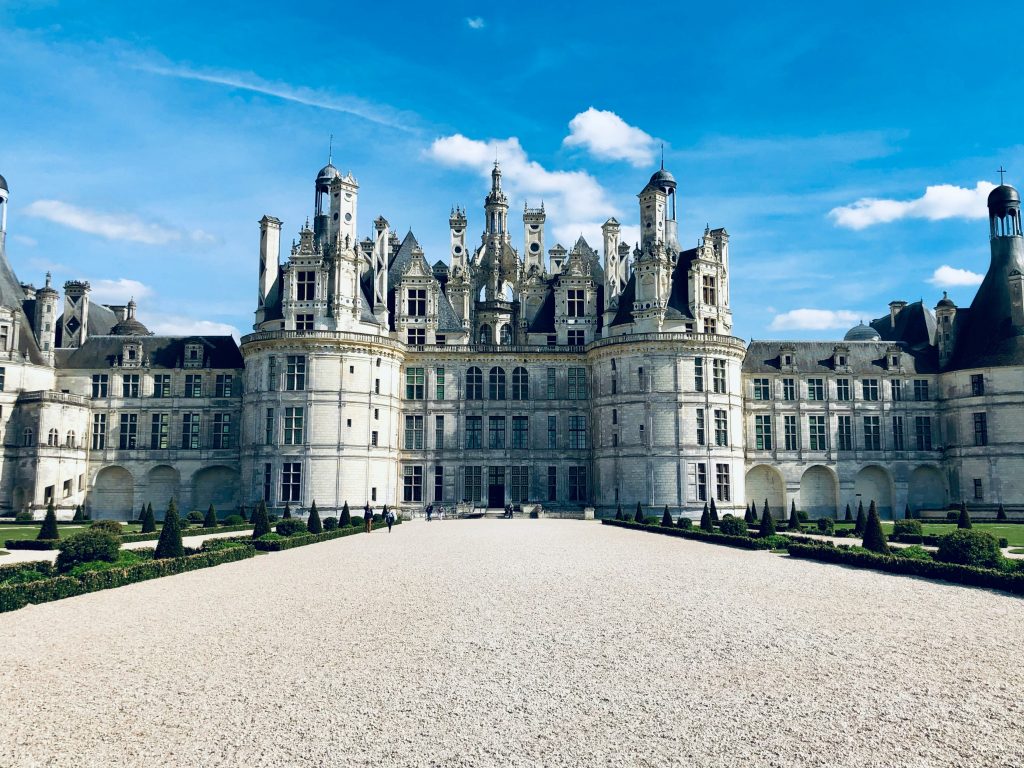
Château de Chambord is the largest and most impressive castle in the Loire Valley. With 440 rooms, 282 fireplaces, and 77 staircases, it’s more like a small city than a castle.
The French king François I built it in the 1500s as a hunting lodge, but it’s so grand it could house hundreds of people.
The castle’s most famous feature is its double spiral staircase. Legend says Leonardo da Vinci designed it. Two people can walk up and down these stairs at the same time and never meet—it’s like magic!
The rooftop terrace offers amazing views over the surrounding forest and lets you see all the castle’s towers and chimneys up close.
Planning Your Visit:
- Allow 3 hours minimum for the full experience
- Best photos from the rooftop terrace (accessible inside the castle)
- Free parking, but it fills up quickly in summer
- Audio guides available in English, French, Spanish, and other languages
- The surrounding park is huge—perfect for walks or bike rides
Château de Chenonceau: The Castle on Water

Chenonceau is probably the most photographed castle in France after Versailles, and when you see it, you’ll understand why.
The castle sits right on top of the Cher River, supported by stone arches. This unique design creates perfect reflections in the water, especially during golden hour.
The castle is known as the “Ladies’ Castle” because powerful women shaped its history. Diane de Poitiers, King Henri II’s mistress, created the beautiful gardens on one side of the castle.
Later, Queen Catherine de Medici added her own gardens on the other side. Today, both gardens are perfectly maintained and bloom with different flowers throughout the year.
Inside the castle, you’ll see rooms decorated exactly as they were 400 years ago. The gallery that spans the river is especially beautiful, with black and white checkerboard floors and huge windows looking out over the water.
Planning Your Visit:
- Allow 2.5 hours for castle and gardens
- Best photos from the upstream bridge at sunset
- The flower market in the courtyard has beautiful local plants
- Restaurant on-site serves traditional Loire Valley food
- Evening illuminations in summer months (absolutely magical!)
Château d’Amboise: Where Leonardo da Vinci Lived

Château d’Amboise sits high on a hill overlooking the Loire River and the charming town below. This royal castle was home to several French kings and has a special connection to Leonardo da Vinci—he’s buried in the castle’s chapel.
The castle itself showcases both Gothic and Renaissance architecture. The royal apartments give you a real sense of how French royalty lived 500 years ago. But the best part might be the views from the castle’s terraces, which stretch across the Loire Valley.
Don’t miss the nearby Clos Lucé mansion, where Leonardo da Vinci spent his last three years. The house displays working models of his inventions, from flying machines to war equipment. The gardens feature larger versions of his designs, and you can actually try some of them out.
Planning Your Visit:
- Combine with Clos Lucé for the full Leonardo experience (allow 4-5 hours total)
- Friday mornings have the best market in Amboise town
- Walk down to the town after your castle visit for lunch
- The Leonardo trail connects the castle to Clos Lucé through town
Hidden Gems: Villandry, Azay-le-Rideau, and Blois
Château de Villandry: Garden Paradise
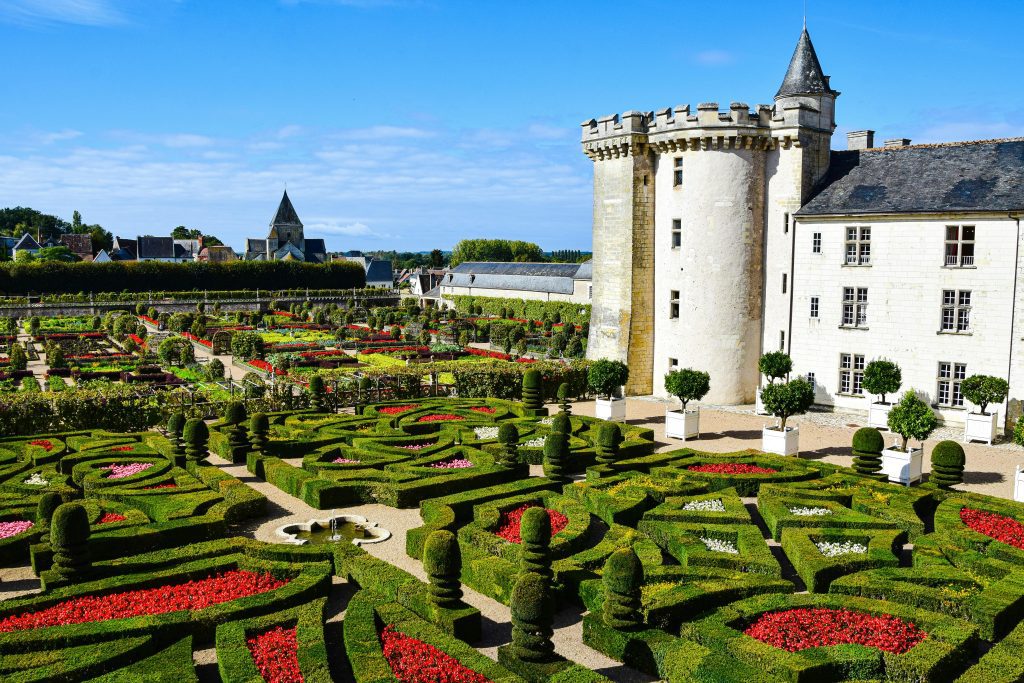
While Villandry’s castle is beautiful, most people come for the gardens—and with good reason. These are some of the most beautiful formal gardens in the world, designed in perfect Renaissance style with incredible attention to detail.
The gardens have four main sections. The ornamental gardens show off classic French garden design with perfectly trimmed hedges and colorful flowers.
The love gardens tell romantic stories through the shapes of the plantings—you can spot hearts, fans, and letters that spell out different types of love. The music garden incorporates musical themes into its design.
Finally, the vegetable gardens prove that growing food can be beautiful too, with vegetables arranged in artistic patterns.
Best Times to Visit:
- Spring (April-May): Fresh green growth and spring flowers
- Summer (June-August): Full blooms and all gardens at their peak
- Fall (September-October): Beautiful autumn colors and harvest themes
- Winter (December-February): Structural beauty and Christmas decorations
Château d’Azay-le-Rideau: Perfect Renaissance Beauty

Built on a small island in the Indre River, Azay-le-Rideau represents the perfect early Renaissance castle. Its white stone walls reflect in the water around it, creating one of the most romantic sights in the Loire Valley.
The castle is smaller than Chambord or Chenonceau, making it perfect if you want a more intimate experience. The interior showcases beautiful period furniture and art.
The surrounding park has walking trails and exotic trees, including giant sequoias and cedars.
Château de Blois: Four Centuries in One Place
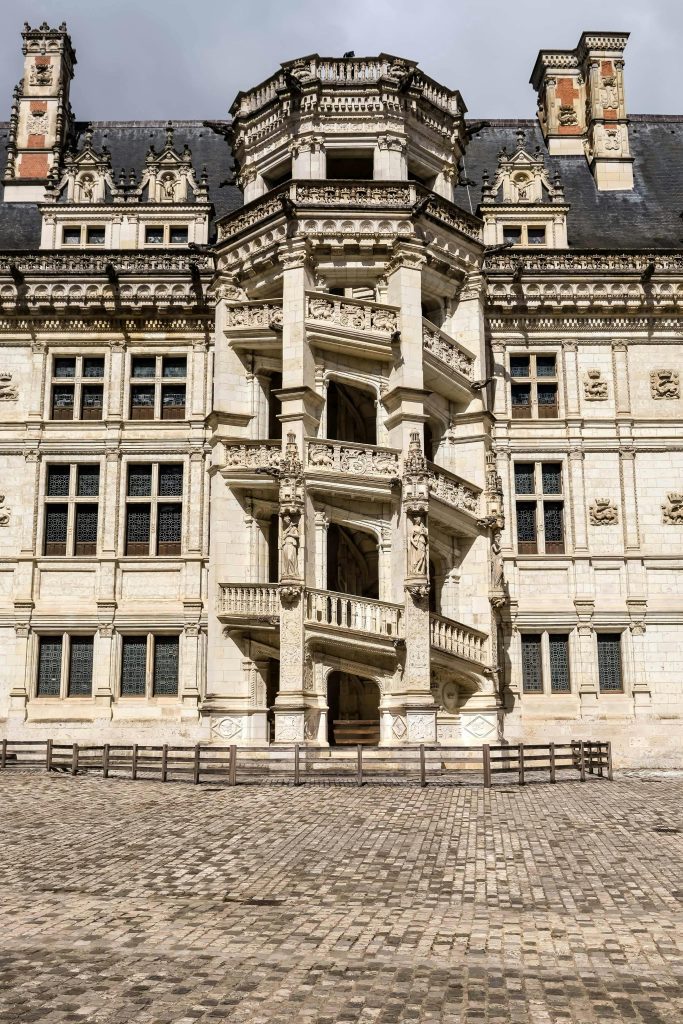
Château de Blois offers something unique—you can see four different periods of French architecture all in one place.
The Gothic section dates from the 1200s, the Louis XII wing from around 1500, the François I wing showcases early Renaissance style, and the Gaston d’Orléans wing represents 1600s classical architecture.
The most famous feature is the Renaissance staircase, an architectural masterpiece with detailed carvings.
Each section of the castle tells the story of French royal life during different eras. In summer, the sound and light show brings this history to life after dark.
Planning Multiple Castle Visits:
- Two castles in one day: Choose castles close to each other, like Villandry and Azay-le-Rideau
- Three castles: Only possible with a car and early start—try Chambord, Cheverny, and Blois
- Best combinations: Chenonceau + Amboise + Clos Lucé, or Villandry + Azay-le-Rideau + Chinon
Historic Cities Perfect for Day Trips
Blois: Royal History Made Simple
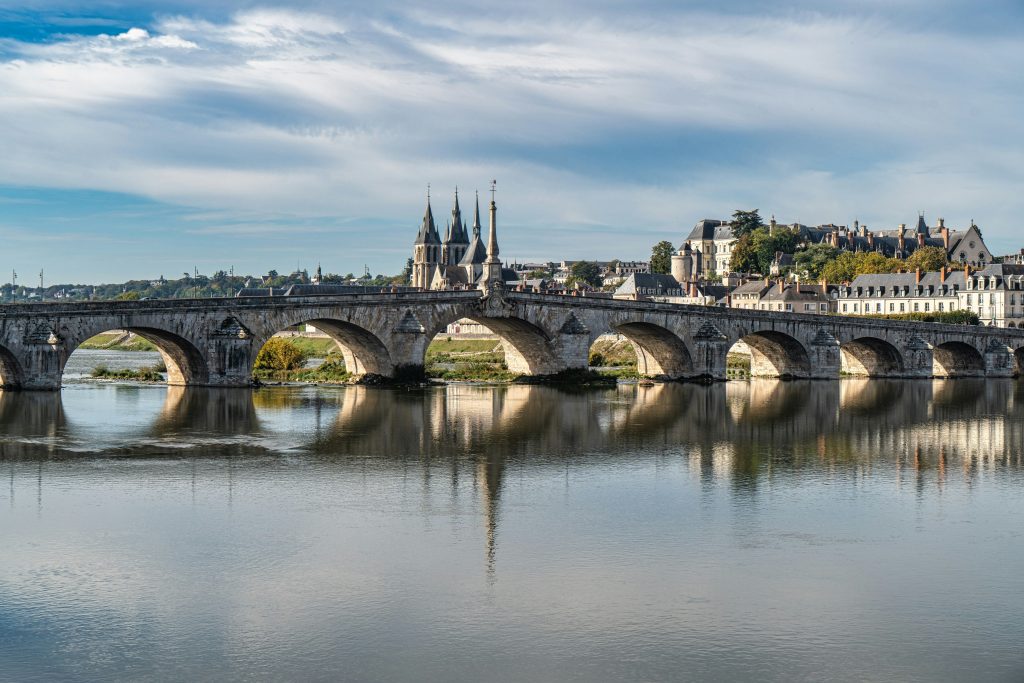
Just 40 minutes from Tours by train, Blois offers the perfect blend of royal history and everyday French life. The city’s main attraction is its royal castle, but the historic center is just as interesting to explore.
After visiting the castle, wander through Blois’ old town. The streets around the castle have beautiful half-timbered houses from the Middle Ages.
The House of Magic (Maison de la Magie) celebrates the city’s most famous magician, Robert-Houdin, with shows and interactive exhibits that kids especially love.
Blois also makes a great base for visiting nearby castles like Chambord and Cheverny. The local tourist office can help you plan combinations and provide current bus schedules.
Perfect Day in Blois:
- Morning: Explore the royal castle (2 hours)
- Lunch: Try a traditional bistro in the old town
- Afternoon: House of Magic and old town exploration
- Option: Add Château de Chambord (20 minutes by car or organized tour)
Angers: Medieval Power and Modern Culture

Angers, 50 minutes from Tours by train, showcases one of Europe’s most impressive medieval fortresses. The massive Château d’Angers houses the world-famous Apocalypse Tapestry, a stunning medieval artwork that tells the story of the Biblical Apocalypse in 90 detailed panels.
The fortress itself is remarkable, with 17 towers connected by walls that are 3 meters thick. The castle gardens offer peaceful walks and great views over the Maine River.
Inside, the Apocalypse Tapestry is displayed in a special climate-controlled gallery where you can see every detail of this 600-year-old masterpiece.
Beyond the castle, Angers has a lively arts scene. The Doutre district across the river features art galleries, unique shops, and excellent restaurants in converted historic buildings.
If you’re traveling with kids, Terra Botanica offers a plant-themed adventure park with rides and educational exhibits.
Planning Your Angers Visit:
- Allow at least 2 hours for the castle and tapestry
- The Doutre district is perfect for lunch and shopping
- Saturday mornings have the best market in the city center
- Terra Botanica needs a full day if you include it (seasonal opening)
Orléans: Following Joan of Arc’s Footsteps
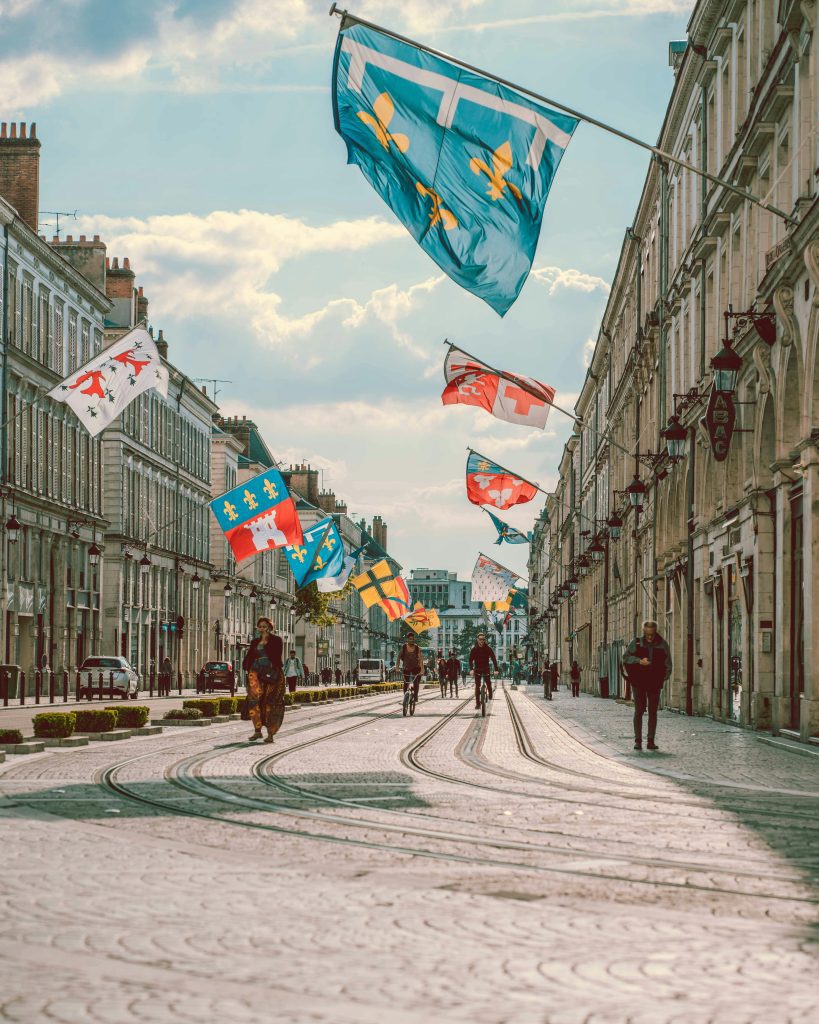
One hour from Tours by train, Orléans holds a special place in French history as the city where Joan of Arc turned the tide of the Hundred Years’ War. Today, you can follow her story through museums, monuments, and historic sites throughout the city.
Start your visit at the Gothic Sainte-Croix Cathedral, which has beautiful stained glass windows depicting Joan of Arc’s story.
The House of Joan of Arc museum brings her story to life with interactive exhibits and historical recreations. Place du Martroi, the city’s main square, features a dramatic statue of Joan on horseback.
The historic center around the cathedral is perfect for walking, with pedestrian streets lined with shops and cafes. The Loire riverbanks offer peaceful paths for strolling and great views back toward the city.
Joan of Arc Trail in Orléans:
- Sainte-Croix Cathedral: Stained glass and historical significance
- House of Joan of Arc: Interactive museum and story
- Place du Martroi: Central square with famous statue
- City ramparts: Remaining sections of medieval fortifications
Le Mans: Medieval Meets Modern
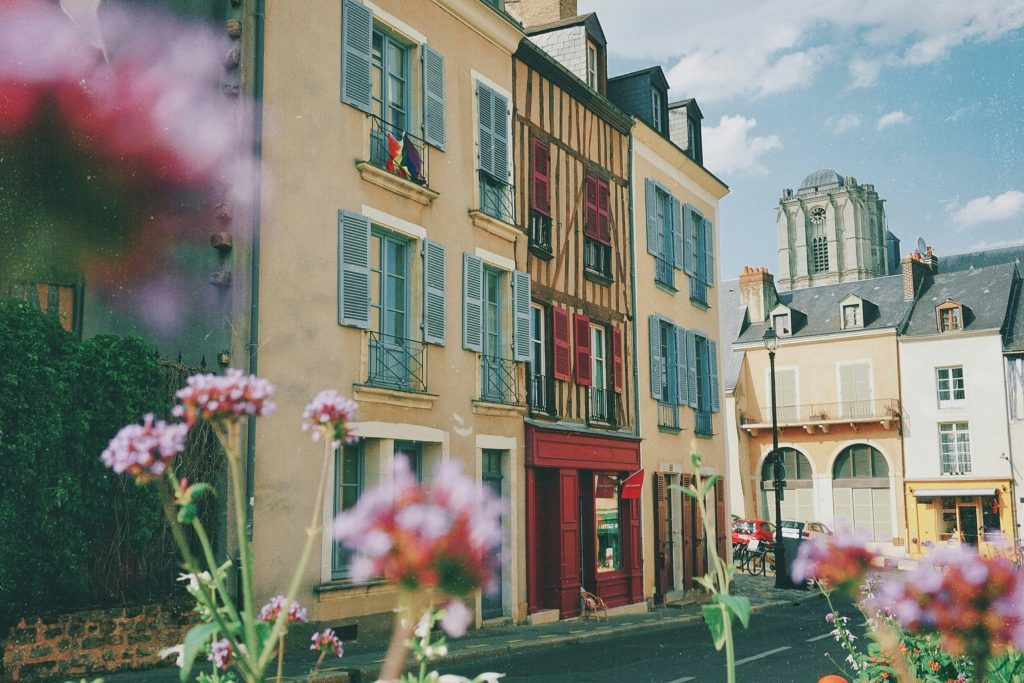
Le Mans offers a unique combination that appeals to history lovers and racing fans alike.
The Plantagenet City (Cité Plantagenêt) is one of Europe’s best-preserved medieval districts, with ancient Roman walls and beautiful half-timbered houses. At the same time, the city is world-famous for the 24 Hours of Le Mans auto race.
The medieval city sits on a hill surrounded by Roman walls that are over 1,600 years old. Walking through these narrow streets feels like traveling back in time.
The Saint-Julien Cathedral showcases beautiful Gothic architecture, and the view from the cathedral square looks out over the modern city below.
For racing fans, the Circuit des 24 Heures offers museum visits and track tours year-round. You can see historic race cars, learn about the famous race’s history, and even drive parts of the actual race track.
Planning Your Le Mans Day:
- Morning: Medieval city exploration (2-3 hours)
- Lunch: Traditional restaurant in the historic center
- Afternoon: Racing circuit and museum (2 hours)
- Transportation: Direct train from Tours (1 hour each way)
Charming Smaller Towns
Saumur: Fairy-Tale Castle and Sparkling Wine

Saumur’s white castle perched high above the Loire River creates one of the valley’s most photographed scenes.
The castle houses museums dedicated to the region’s history and decorative arts. The town below is famous for its National Riding School, where you can watch the elite Cadre Noir riders practice their skills.
Saumur is also the capital of Loire Valley sparkling wine. Many cellars carved into the limestone cliffs offer tours and tastings.
These underground caves stay cool year-round and create dramatic settings for learning about traditional wine-making methods.
Chinon: Medieval Streets and Royal History

Chinon’s massive medieval fortress overlooks the Vienne River and recalls Joan of Arc’s historic meeting with the future Charles VII.
The fortress ruins are impressive, but the real charm is in the town’s narrow medieval streets lined with restaurants and traditional shops.
The town celebrates its most famous resident, Renaissance writer François Rabelais, with a heritage trail that connects sites from his life and work.
The weekly market showcases local products, and the surrounding countryside produces excellent red wines.
Planning Your Perfect Day Trip
Transportation Options Explained
Public Transportation Strategy
Taking public transport from Tours requires some planning, but it’s definitely doable and often more relaxing than driving. Here’s how to make it work:
Regional Trains:
- Buy tickets at the station or online through SNCF Connect
- No reservations needed for regional trains—just hop on
- Validate paper tickets before boarding (machines on platforms)
- Check weekend schedules as they sometimes change
Bus Services to Castles:
- Rémi Centre-Val de Loire operates tourist routes
- Buy tickets from the driver (exact change helpful)
- Schedules designed around castle opening hours
- Some routes are seasonal (summer only)
Money-Saving Tips:
- Under 26? Ask for youth discounts on trains
- Group discounts available for 10+ people
- Some château combo tickets include transport
- Multi-day transport passes can save money
Organized Tours: What to Expect
Small Group Tours (8-16 people):
- More personal attention from guides
- Flexible itineraries based on group interests
- Higher cost (€80-150 per person) but good value
- Usually include skip-the-line access
Large Coach Tours (30-50 people):
- Lower cost (€50-100 per person)
- Fixed schedules with brief stops
- Less personal attention
- Good for first-time visitors wanting an overview
Private Tours:
- Complete flexibility with your own guide and driver
- Cost €300-800 per day (for entire group)
- Perfect for special occasions or specific interests
- Book well in advance, especially in peak season
Driving Yourself: Pros and Cons
When Driving Makes Sense:
- You want maximum flexibility
- Visiting multiple castles in one day
- Traveling with a family or large group
- Planning to explore small villages
Driving Challenges:
- Parking can be limited and costly (€3-8 per castle)
- GPS essential as rural roads aren’t well-marked
- Traffic in town centers during market days
- Need designated driver if wine tasting
Car Rental Tips:
- Book through major companies for reliability
- International Driving Permit recommended
- Full insurance coverage worth the extra cost
- Automatic transmission costs more but easier for some drivers
Budget Planning Made Simple
Budget Day Trip (per person):
- Transport by bus or train: €10-20
- One castle entry: €11-15
- Picnic lunch: €8-12
- Small souvenir: €5-10
- Total: €34-57
Mid-Range Day Trip (per person):
- Small group tour: €80-120
- Restaurant lunch: €25-35
- Castle guidebook: €5-8
- Local wine bottle: €8-15
- Total: €118-178
Luxury Day Trip (per person):
- Private guide (split among group): €100-150
- Fine dining lunch: €50-80
- Professional photos: €30-50
- Premium souvenirs: €20-40
- Total: €200-320
Hidden Costs to Remember:
- Parking at castles: €3-8 per location
- Audio guides: €3-5 each (if not included)
- Café drinks: €2-4 each
- Restroom fees: €0.50-1 (some locations)
Seasonal Planning Guide
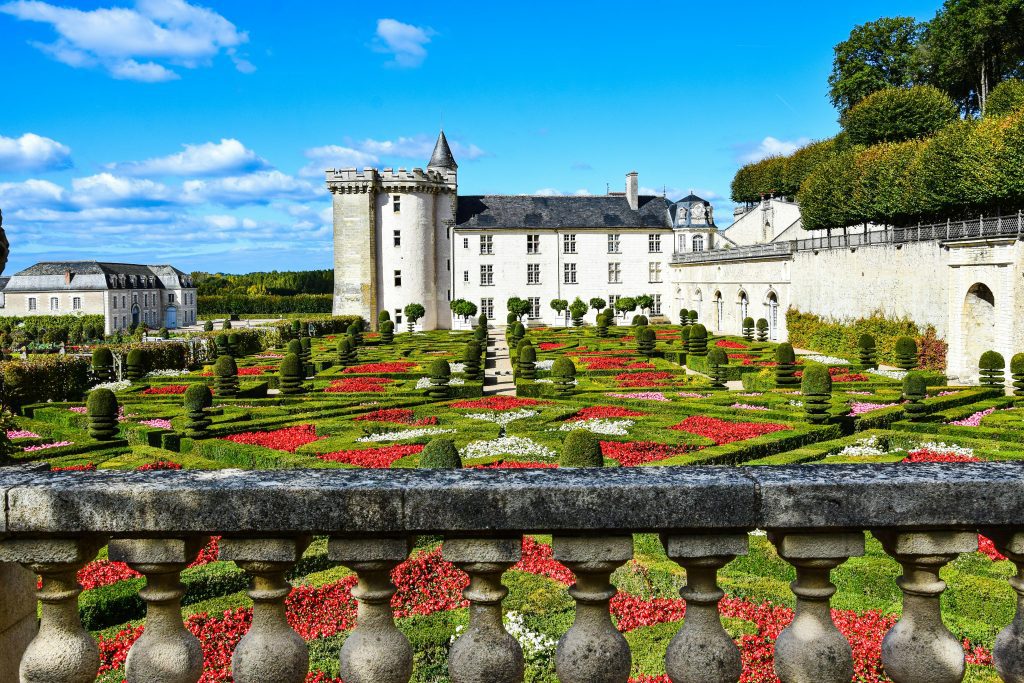
Spring (March-May): Fresh Beginnings Spring is perfect for garden lovers and photographers. The weather is mild, crowds are smaller, and prices are lower than summer. Castle gardens come alive with tulips, daffodils, and flowering trees.
Pros:
- Comfortable temperatures for walking
- Beautiful garden blooms, especially at Villandry
- Fewer crowds at popular castles
- Lower accommodation prices
Cons:
- Weather can be unpredictable—pack layers
- Some attractions have shorter hours
- Rain is possible—have indoor backup plans
Summer (June-August): Peak Experience Summer offers the full Loire Valley experience with everything open, extended hours, and perfect weather. However, it’s also the busiest and most expensive time.
Pros:
- All attractions open with longest hours
- Perfect weather for outdoor activities
- Cultural events and festivals
- Daylight until 9 PM allows long days
Cons:
- Largest crowds, especially July and August
- Highest prices for tours and accommodation
- Parking fills up early at popular castles
- Very hot weather some days
Fall (September-October): The Sweet Spot Many travelers consider fall the best time to visit the Loire Valley. You get good weather, beautiful autumn colors, smaller crowds, and reasonable prices.
Pros:
- Comfortable temperatures and clear skies
- Beautiful fall colors in castle parks
- Manageable crowds after summer rush
- Still warm enough for outdoor dining
Cons:
- Some seasonal attractions begin closing
- Daylight hours start getting shorter
- Weather becomes more variable
Winter (November-February): Intimate Experiences Winter focuses on indoor castle experiences and cultural activities. While gardens aren’t at their best, you’ll have castles almost to yourself and see them decorated for Christmas.
Pros:
- Smallest crowds mean personal attention
- Christmas decorations at many castles
- Lowest prices of the year
- Cozy atmosphere with fireplaces and warm cafes
Cons:
- Shorter days limit what you can see
- Some attractions close or have reduced hours
- Weather can be cold and rainy
- Gardens look dormant
Sample Itineraries for Different Interests
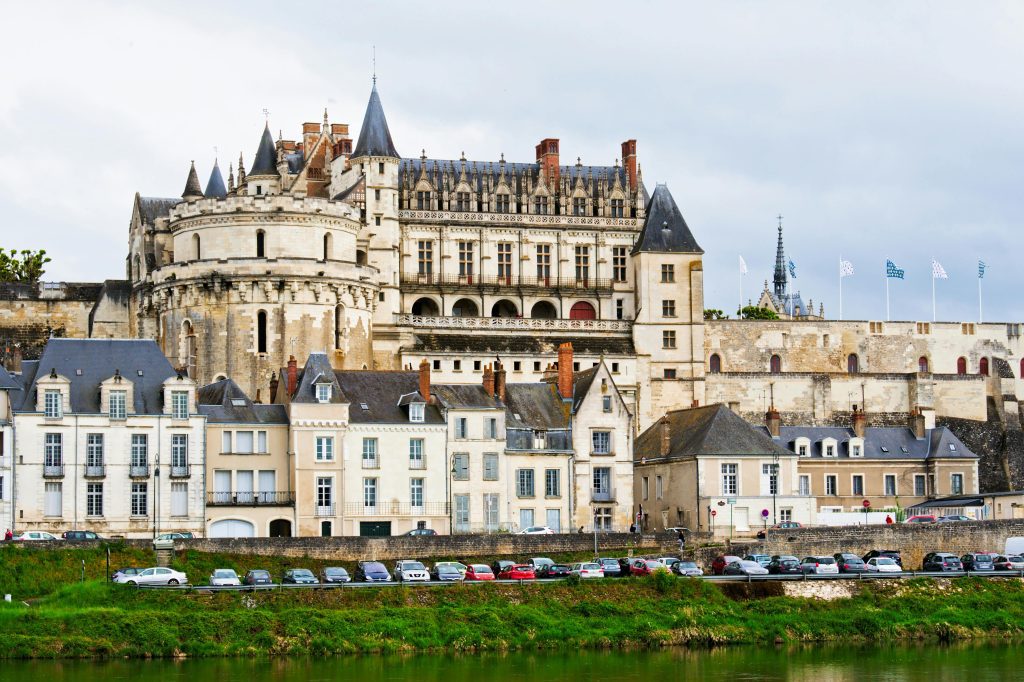
Classic First-Timer Day Trip:
- 8:30 AM: Depart Tours for Château de Chambord
- 10:00 AM: Explore Chambord castle and rooftop (2.5 hours)
- 12:30 PM: Drive to Chenonceau with picnic lunch
- 1:30 PM: Lunch in Chenonceau gardens
- 2:30 PM: Tour Chenonceau castle and gardens (2 hours)
- 4:30 PM: Return to Tours
- Best for: First-time visitors who want to see the two most famous castles
Historic Cities Explorer:
- 8:00 AM: Train from Tours to Angers
- 9:00 AM: Château d’Angers and Apocalypse Tapestry (2.5 hours)
- 12:00 PM: Lunch in Angers historic center
- 2:00 PM: Explore Doutre district and local shops
- 4:00 PM: Walk along Maine River
- 6:00 PM: Return train to Tours
- Best for: History enthusiasts and art lovers
Gardens and Small Castles Day:
- 9:00 AM: Depart Tours for Villandry
- 10:00 AM: Villandry gardens and castle (2.5 hours)
- 12:30 PM: Lunch in Villandry village
- 2:00 PM: Drive to Azay-le-Rideau
- 2:30 PM: Azay-le-Rideau castle and park (2 hours)
- 4:30 PM: Explore Azay village or return to Tours
- Best for: Garden enthusiasts and photographers
Royal History Deep Dive:
- 8:00 AM: Early departure for Blois
- 9:00 AM: Château de Blois comprehensive visit (2.5 hours)
- 12:00 PM: Lunch in Blois old town
- 2:00 PM: Drive to Chambord (20 minutes)
- 2:30 PM: Chambord castle and park exploration (3 hours)
- 5:30 PM: Return to Tours
- Best for: History buffs wanting to understand royal life
Frequently Asked Questions
Transportation & Getting Around
Q: How do I get from Tours to the Loire Valley châteaux? A: You have several good options. Public buses run directly to major castles like Chenonceau and Villandry (€2-5 per trip). Organized tours include transportation and cost €80-150 per person. Renting a car gives you the most freedom and costs about €35-50 per day plus gas.
Q: Which châteaux can I reach by public transport from Tours? A: Several major castles have good connections. Chenonceau has a direct seasonal bus. Villandry and Azay-le-Rideau share bus Line C2. For Amboise, take the train (35 minutes), then walk 10 minutes to the castle.
Q: How long do train journeys take from Tours to nearby cities? A: Train times are reasonable: Blois takes 40 minutes, Angers takes 50 minutes, Orléans and Le Mans each take about 1 hour. Trains run several times per day.
Q: Is it worth renting a car for Loire Valley day trips? A: A car makes sense if you want to visit multiple castles in one day or travel with a family. Skip the car if you’re comfortable with tour schedules or only visiting 1-2 places per day.
Planning & Timing
Q: How many châteaux can I visit in one day from Tours? A: Be realistic about what you can see well. With a car, you can comfortably visit 2-3 castles. Using public transport, plan for 1-2 castles. Quality is better than quantity.
Q: What’s the best time of year to visit Loire Valley châteaux? A: Fall (September-October) offers beautiful weather, autumn colors, and manageable crowds. Spring has blooming gardens and smaller crowds. Summer provides full access but larger crowds and higher prices.
Q: How much time should I spend at each château? A: Plan these minimum times: Chambord needs 2.5-3 hours, Chenonceau takes 2-2.5 hours, Villandry needs 2-3 hours for the gardens. Smaller castles like Amboise need about 1.5-2 hours each.
Q: What should I do if it rains during my château visit? A: Don’t let rain ruin your day! All castles have extensive indoor areas to explore. Focus on interior rooms and artwork. Many wine cellars offer tours regardless of weather.
Costs & Budgeting
Q: How much does a day trip from Tours cost? A: Costs vary widely. A budget day trip costs about €30-40 per person. A mid-range organized tour costs €115-175 per person. A luxury private tour can cost €240-350 per person.
Q: Are there any money-saving tips for château visits? A: Yes! Buy the Loire Valley Pass for €35—it covers three castles and saves money. Students under 26 get discounts. Children under 18 often enter free. Visit during off-season for lower prices.
Q: What’s included in organized tour prices? A: Most tours include transportation from Tours, professional guide services, and entrance fees. However, lunch is usually extra unless specifically mentioned. Always check what’s included before booking.
Practical Considerations
Q: Do I need to book château visits in advance? A: During peak season (June-August) and weekends, advance booking prevents disappointment. You can usually walk up during off-season weekdays. Online booking often includes small discounts.
Q: What should I pack for a château day trip? A: Pack comfortable walking shoes, weather-appropriate layers, a portable phone charger, and a refillable water bottle. In summer, add sun protection. In winter, bring warm clothes and sturdy shoes.
Q: Are Loire Valley châteaux suitable for children? A: Many castles work well for families. Amboise is great because kids love Leonardo da Vinci’s inventions at Clos Lucé. Chenonceau has beautiful gardens for kids to explore. Limit to 1-2 castles per day with children.
Q: Can I bring food and drinks to châteaux? A: Yes, most castles allow picnics in their grounds. You can bring water bottles inside castles. However, don’t bring food into castle interiors, and respect landscaped garden areas.
Cultural & Language
Q: Do I need to speak French to enjoy château visits? A: Not at all! Most major castles offer audio guides and information in English. Many tour guides speak English. Basic French phrases are appreciated but not required.
Q: What’s the proper etiquette for château visits? A: Keep voices low inside castles and don’t touch furniture or artwork. Ask before taking photos inside since rules vary. Dress nicely but comfortably. Tip tour guides 10-15% for exceptional service.
Q: Are there accessibility options for visitors with mobility issues? A: Most major castles have wheelchair access to ground floors and designated parking. However, upper floors often aren’t accessible. Contact castles directly to discuss specific needs.
Insider Tips and Local Secrets

Beat the Crowds Like a Local
Timing Secrets: The biggest crowds arrive at popular castles between 10 AM and 2 PM, especially on weekends. Start your day early (9 AM opening) or visit after 4 PM for a more peaceful experience.
Tuesday through Thursday generally have fewer visitors than weekends or Mondays.
At Chenonceau, enter through the gardens first, then visit the castle when tour groups move on to other areas. At Chambord, use the north parking area—it’s a shorter walk and fewer tour buses stop there.
Local Festival Insider Info: Avoid traveling during French school holidays (especially Easter week and July) when domestic tourism peaks. However, seek out local village festivals in summer—they offer authentic experiences with traditional music, food, and crafts that most tourists never see.
Photography Like a Pro
Golden Hour Magic: For the best photos, plan castle visits around golden hour. Chenonceau is stunning from the upstream bridge 30 minutes before sunset.
Chambord’s rooftop terrace (accessible through the castle) offers unique angles. Azay-le-Rideau’s water reflections are perfect just before sunset.
Secret Viewpoints:
- Chenonceau hidden spot: Walk downstream from the castle along the river path for reflections without crowds
- Chambord forest clearing: A 10-minute walk into the surrounding forest gives you the castle rising above the trees
- Amboise panorama: Behind the castle, stairs lead to a viewpoint overlooking the Loire Valley
Seasonal Photo Tips: Spring is perfect for garden blooms with soft morning light. Summer requires early morning or late afternoon to avoid harsh shadows. Fall offers amazing colors in castle parks. Winter highlights architectural details without foliage distractions.
Local Food and Hidden Restaurants
Where Locals Actually Eat:
In Tours:
- L’Atelier des Augustins: Historic setting with modern French cuisine (make reservations)
- Les Bocaux: Farm-to-table restaurant that changes its menu seasonally
- La Maison des Halles: Historic market hall with multiple food vendors under one roof
Near Castles:
- Chenonceau: Restaurant de l’Orangerie in the castle grounds uses local ingredients
- Amboise: L’Épicerie on Place Michel Debré is a wine bar with excellent small plates
- Villandry: Domaine de la Giraudière offers vineyard dining with castle views
Market Day Secrets: Tours has markets on Wednesday and Saturday mornings at Place Jean Jaurès. Amboise’s Friday and Sunday markets on Place Michel Debré are smaller but have excellent local producers. Chinon’s Thursday and Saturday markets in Place Jeanne d’Arc feature the best selection of local specialties.
Cultural Experiences Most Tourists Miss
Traditional Crafts Still Practiced: Visit working pottery studios in La Borne, where artisans still use techniques from centuries ago. In Chinon, some cellars still employ traditional barrel makers who craft oak barrels by hand. You can sometimes watch these craftsmen work and learn about their ancient skills.
Learning Opportunities: Several castles offer special workshops during school holidays. Villandry sometimes has garden design classes. Clos Lucé offers engineering workshops based on Leonardo’s inventions. Check castle websites for special programs that let you participate rather than just observe.
Transportation Insider Knowledge
Train Travel Hacks: Buy your tickets online through SNCF Connect to avoid station lines and get small discounts. Regional trains don’t require reservations—just validate your ticket and find a seat. If traveling with a group, ask about group discounts at the ticket counter.
Bus Route Secrets: The château bus routes often stop at scenic viewpoints along the way. Ask the driver where these stops are—you might discover a perfect picnic spot or photo opportunity. Some buses also stop at local markets on certain days.
Driving Tips from Locals: Avoid driving through city centers during market days (usually mornings). Use the “Bis” routes (alternative routes) marked with green signs to bypass traffic. Many villages have free parking just outside the historic centers—walk a few extra minutes to save money.
Money-Saving Strategies
Hidden Discounts: Many castles offer family tickets that aren’t well advertised—ask at the ticket office. Some local tourism offices sell combo tickets that include multiple attractions plus transportation. Students with international student cards often get better discounts than advertised prices.
Free Experiences: Walking through Tours’ old town costs nothing but offers beautiful architecture and lively atmosphere. Many churches throughout the region are free to visit and contain amazing art and history. Loire riverbank paths provide free scenic walks with great views of castles and countryside.
Timing for Best Prices: Book accommodations and tours well in advance for summer travel, but last-minute deals sometimes appear for shoulder seasons. Tuesday through Thursday often have lower prices than weekends. Some castles offer reduced admission after 4 PM during summer months.
Safety and Practical Tips
Staying Safe and Connected: Keep emergency numbers in your phone: 112 for all emergencies, and the Tours Tourist Office at +33 2 47 70 37 37 for travel help. Most castles and towns have good cell phone coverage, but download offline maps before visiting rural areas.
Weather Preparedness: Loire Valley weather can change quickly, especially in spring and fall. Carry a light rain jacket year-round. Summer temperatures can reach 35°C (95°F)—bring extra water and seek shade during peak hours. Winter paths can be icy early in the morning—wear shoes with good grip.
Language and Communication: Download a translation app like Google Translate, which can translate text through your phone’s camera—perfect for menus and signs. Most tourist information is available in English, but learning basic phrases like “Bonjour” (hello), “Merci” (thank you), and “Parlez-vous anglais?” (Do you speak English?) goes a long way.
Local Customs to Know: French people generally dress more formally than American tourists. While you don’t need fancy clothes for castle visits, avoid looking too casual. Say “Bonjour” when entering shops and “Au revoir” when leaving—it’s considered polite. Lunch is typically served between 12 PM and 2 PM, and many restaurants close between lunch and dinner service.
Planning Resources and Final Tips
Essential Apps and Websites
Navigation and Transport:
- Citymapper: Excellent for Tours public transport
- SNCF Connect: Official app for train schedules and tickets
- Google Maps: Download offline maps for the Loire Valley before traveling
- Rémi Centre-Val de Loire website: Bus schedules to castles
Translation and Communication:
- Google Translate: Camera function translates menus instantly
- Duolingo: Learn basic French phrases before your trip
Loire Valley Specific:
- Loire Valley Tourism official website: Current events and practical information
- Weather apps: French weather updates for planning outdoor activities
Pro tip: For a comprehensive list of the most useful travel apps for exploring Europe (including France), check out our detailed guide on the best travel apps for Europe. It covers everything from navigation and translation to money management and offline entertainment—essential tools for any European adventure.
Booking Strategies
When to Book in Advance:
- Peak season (June-August): Book tours and accommodations 2-3 months ahead
- Shoulder season (April-May, September-October): 1-2 months provides good selection
- Off-season: Often can book just days ahead, but some attractions have limited hours
Last-Minute Options: Tours’ tourist office can help with same-day tour availability. Many castles accept walk-up visitors during off-peak times. Hotel booking sites sometimes offer last-minute deals for unsold rooms.
Packing Your Day Trip Bag
Essential Items:
- Comfortable walking shoes with good support
- Weather-appropriate layers (Loire Valley weather changes quickly)
- Portable phone charger and charging cable
- Refillable water bottle (stay hydrated while walking)
- Small backpack or day bag for carrying items
Photography Gear:
- Camera or smartphone with plenty of storage space
- Portable tripod for group photos and sunset shots
- Lens cleaning cloth (gets dusty on gravel paths)
- Extra battery pack for your phone
Comfort Items:
- Small umbrella or rain poncho
- Sunglasses and sun hat for summer visits
- Hand sanitizer and basic first aid supplies
- Snacks for energy during long castle visits
Final Thoughts
The Loire Valley opens its doors to you like a living fairy tale, where every castle has stories to tell and every historic street holds centuries of memories. From your comfortable base in Tours, you now have everything you need to create amazing experiences that will stay with you forever.
Whether you choose to spend your days exploring the grand rooms of Chambord, walking through the romantic gardens of Chenonceau, following Joan of Arc’s footsteps in Orléans, or discovering the medieval streets of Angers, each trip offers something special.
The beauty of the Loire Valley isn’t just in its famous attractions, but in the small moments too—sharing a picnic lunch in a castle garden, chatting with a local market vendor, or watching the sunset reflect off an ancient castle’s walls.
Remember that the best travel experiences come from staying curious and flexible. Use this guide as your starting point, but don’t be afraid to explore that interesting village you spotted from the train window or to spend extra time somewhere that captures your imagination.
The Loire Valley rewards travelers who take time to really experience each place rather than rushing through a checklist.
Ready to begin? Start by choosing your first destination from this guide, check current opening hours and transportation schedules, and book your first castle visit. Your unforgettable Loire Valley adventure starts with that first step out of Tours toward whatever amazing experience calls to you most.
Want more France travel inspiration? Explore our other guides to hidden gems throughout France, seasonal travel tips, and local recommendations that go beyond typical tourist experiences.
| Save on your France trip with these resources! These are the companies that I recommend to use when travelling: |
| Flights: Expedia for cheapest and promotional offers on flight options. Trains: SNCF Connect (official French railways) for direct bookings and best prices on TGV and regional trains. Accommodations: Booking.com for the large selections of hotels. Esim: Airalo for affordable global data plans with instant activation in over 200 countries. Travel Insurance: Visitors Coverage for comprehensive international travel insurance with excellent medical coverage and 24/7 support, especially designed for visitors traveling abroad. Cars : RentalCars for comparable car rental prices from a wide range of rental car companies. Private tours and activities: I always choose Viator, Klook or GetYourGuide for their reputable choices of tours and activities. |


